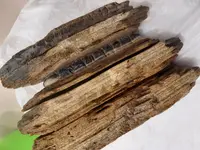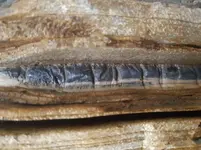Daven
Tenderfoot
- Joined
- May 7, 2021
- Messages
- 3
- Reaction score
- 9
- Golden Thread
- 0
- Primary Interest:
- All Treasure Hunting


It looks like some kind of sedimemtary layered rock or manmade? But cannot identify it. It has like a sandy clay inbetween some of the layers, a few smaller bits snapped off like plaster others are hard as, well, rock. Extremely heavy, was dusty prior to washing, no fibres though. Stinky. No idea what the black layer is. Bit wet from washing in the photos and since then noticed little white specks on the rock. I am not convinced that this is Petrified wood. Most of it is solid and hard, sort of chalky if I scratch it but can smudge back over scratch to hide it. This rock was got in Spain no idea where it was found though.
Thank you.





